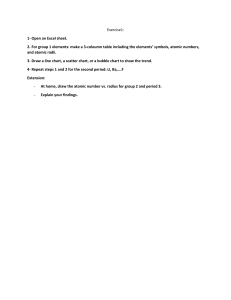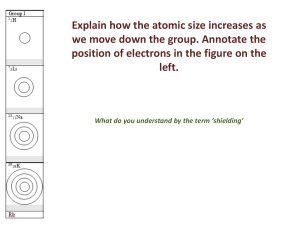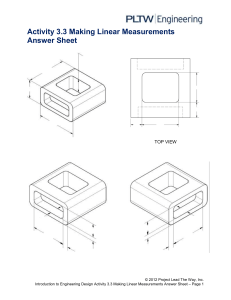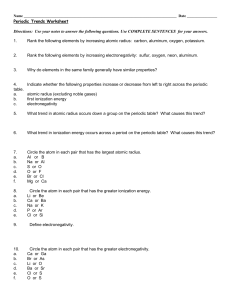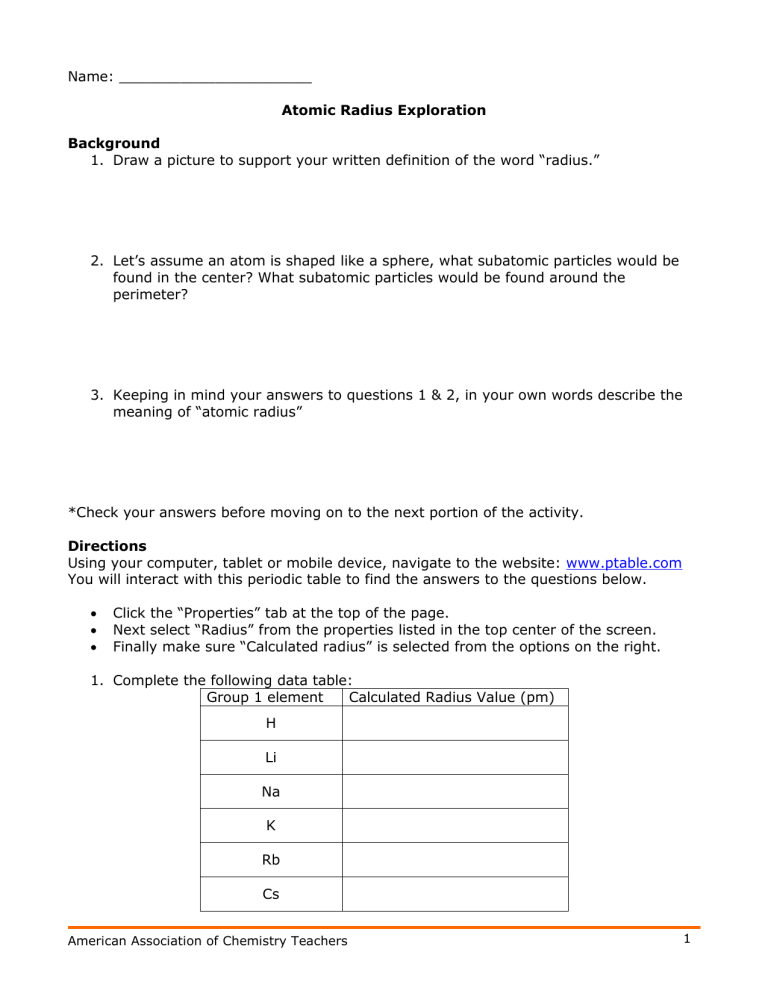
Name: ______________________ Atomic Radius Exploration Background 1. Draw a picture to support your written definition of the word “radius.” 2. Let’s assume an atom is shaped like a sphere, what subatomic particles would be found in the center? What subatomic particles would be found around the perimeter? 3. Keeping in mind your answers to questions 1 & 2, in your own words describe the meaning of “atomic radius” *Check your answers before moving on to the next portion of the activity. Directions Using your computer, tablet or mobile device, navigate to the website: www.ptable.com You will interact with this periodic table to find the answers to the questions below. Click the “Properties” tab at the top of the page. Next select “Radius” from the properties listed in the top center of the screen. Finally make sure “Calculated radius” is selected from the options on the right. 1. Complete the following data table: Group 1 element Calculated Radius Value (pm) H Li Na K Rb Cs American Association of Chemistry Teachers 1 2. What trend in the data do you observe as you move from the top of the periodic table to the bottom within this group? 3. Does this periodic trend apply to any other group? Briefly investigate the atomic radii values in another group to support your answer. 4. What ideas do you have about the factors that actually contribute to the atomic radius trend within a group? (Revisit your background questions to guide you). 5. Complete the following data table: Period 2 Li Be B element Atomic Radius Value (pm) C N O F Ne 6. What trend in the data do you observe as you move from the left of the periodic table to the right within this period? 7. Using your knowledge of the Bohr model, as well as considering the atomic radius data values collected in question #5, complete the following table. Make sure to consider comparative sizing of each model. Period 2 element Li Be B C N O F Ne Bohr Model 8. Does this periodic trend apply to any other period? Briefly investigate the atomic radii values in another period to support your answer. American Association of Chemistry Teachers 2 9. What ideas do you have about the factors that actually contribute to the atomic radius trend within a period? (Think about subatomic particles) 10. Draw a vertical and horizontal arrow next to the periodic table outline below. Point the arrows in the direction that the atomic radius increases. 11.Based on the trend arrows drawn, make a prediction, and place the following elements in ordering of increasing atomic radius (for smallest to largest): Si, Ca, C, F, Cs 12.Check values on www.ptable.com and record the actual values for atomic radius in the table below. Was your prediction from question #11 correct? Element symbol Si Ca C F Cs Atomic Radius Value Rank (1-5) 1=smallest 5=largest American Association of Chemistry Teachers 3 13.Read the following descriptions of two important factors that affect the atomic radius of an atom, then answer the following questions: Electron Shielding Effect: This is due to inner electrons “shielding” the valence electrons from the positive pulling force of the nucleus. As an atom increases its number of electron shells, the shielding effect will increase in turn keeping the valence electrons distanced from the nucleus. Effective Nuclear Charge: This is due to the number of protons in an atom, the more protons the stronger the pulling force of the nucleus will be on the electrons in the atom. a. Revisit your answers for questions 1-4. Using the vocabulary terms given above make a statement about the atomic radius trend within a group on the periodic table. Use two specific elements as examples in your response. b. Revisit your answers for questions 5-9. Using the vocabulary terms given above make a statement about the atomic radius trend within a period on the periodic table. Use two specific elements as examples in your response. American Association of Chemistry Teachers 4
